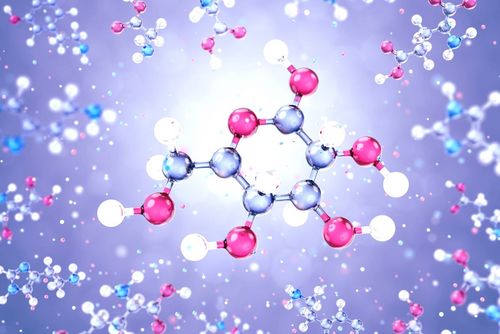A research team from the University of Montreal’s Department of Chemistry has just developed new tools to study the encounter between members of two families of vital biomolecules: sugars and proteins. This work, which paves the way for numerous applications, has just been published in Angewandte Chemie, a renowned chemistry journal.
Sugar, omnipresent in biology

“Caramel, candy and chocolate”… Sugar is omnipresent in our lives, but not just in the sense that most people understand it. In fact, in the great families of the living world, carbohydrates extend far beyond our nutritional pleasures and include an immense diversity of natural biomolecules.
“All the cells that make up our world are covered in sugar, and this applies to all living organisms.” These carbohydrates are therefore at the forefront of almost all biological processes and play a fundamental role in maintaining the health of our bodies or in the triggering of certain diseases,” argues Samy Cecioni, professor in the UdeM’s chemistry department.
He continues: “Scientists have long believed that these complex sugars were simple decorations on the cell. We now know that sugars interact with many other molecules, particularly lectins, a large family of proteins.”
Sugar, lectins, bacteria, viruses and cancer cells
Lectins, sometimes called “hemagglutinins,” are natural proteins found in all living organisms that have the peculiarity of recognizing sugars and temporarily binding to them.
This specific and reversible recognition of carbohydrates is involved in various biological processes, such as recognition between cells in immune responses triggered by infections.
Lectin research is a booming field. Scientists have discovered that lectins “stick” to sugar… and this compound plays a role in the development of many diseases.
“The more we study this phenomenon between sugars and lectins, the more we recognize its essential importance for biology. Multiple studies have shown that from the bacteria that colonize our lungs, from the flu virus that attaches to our cells and causes infection, to the cancer cells that trick our immune system to avoid destruction, it changes every time “It’s about the “story of an encounter” between lectins and sugars,” summarizes Samy Cecioni.
Sugar and lectins: a low-intensity clandestine encounter
However, there are some pieces missing from the puzzle to understand how the connection occurs, as it is not easy to tell when a sugar binds to some of these lectins.
These interactions are generally furtive and low intensity. Cécile Bousch, a master’s student in Professor Cecioni’s laboratory, and her doctoral colleague Brandon Vreulz had the idea of illuminating these interactions with light. Together with their professor, they developed a type of chemical probe capable of irreversibly “freezing” the interaction between a sugar and a lectin and at the same time making it fluorescent.
The image of a lock and key model is often used in popular science to describe how biomolecules interact. To study this biochemical encounter, chemists had already developed molecules capable of forming new chemical bonds to lock the key (the sugar) in the lock (the lectin) and thus discover which sugars are linked to lectins that are important for health.
Professor Cecioni’s team’s idea was to attach a reactive chromophore – a group of atoms that gives color to a molecule – to the sugar so that it can activate its fluorescent “key” function when it binds to a lectin. Once the protein is captured and fluoresces, it becomes much easier for scientists to study the underlying mechanisms and their disruptions.
Professor Cecioni and his students are confident that the technology they developed could also be used on other types of molecules. We could even control the color of the new responsive buttons that would be created. By enabling the visualization of interactions between molecules, this discovery expands our collection of tools for studying biological interactions and could change our very incomplete vision of sugar detection.
About this study
The article “Fluorogenic Photo-Crosslinking of Glycan-Binding Protein Recognition Using a Fluorinated Azido-Cumarin Fucoside” by Cécile Bousch and colleagues was published on October 17, 2023 in Angewandte Chemie.
This study was funded by the Natural Sciences and Engineering Research Council of Canada, the Fonds de recherche du Québec – Nature et Technologies and the Canada Foundation for Innovation.
About Professor Samy Cecioni
Recruited by the Faculty of Chemistry in 2019, Samy Cecioni is a young researcher specializing in the emerging fields of biological chemistry and glycomics. He is the recipient of one of the Research Excellence Medals 2021 from the Faculty of Arts and Sciences at the UdeM.
“Our research team is developing new tools to accelerate discoveries in glycoscience. The molecules altered by sugar are sometimes referred to as the “dark matter” of life, and we propose multidisciplinary approaches at the intersection of chemistry and biology to enable advances relevant to human health,” he says. To learn more, listen to Professor Cecioni explain the research conducted in his laboratory.

